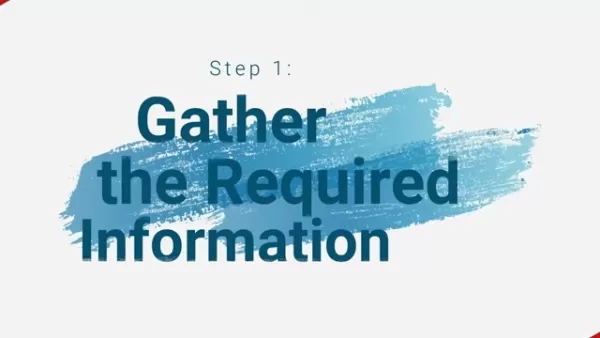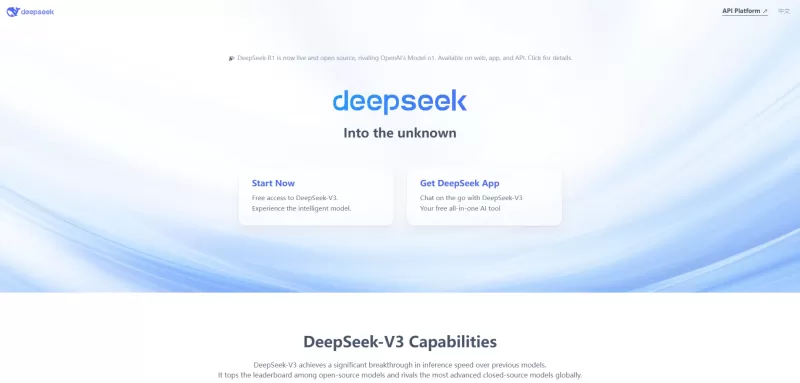Data Centers and AI: Fueling the Future with Innovative Energy Solutions
Artificial intelligence is revolutionizing our daily experiences, with tools like ChatGPT, Copilot, and smart speakers becoming more common. Yet, this AI surge demands huge amounts of data and computational power, straining our energy resources. This article explores how data centers are pivotal in fueling the AI boom, examining the rising energy needs and the innovative solutions emerging to address these challenges.
Key Points
- AI models need extensive data for both training and operation.
- Data centers are vital for processing and storing this data.
- AI queries consume significantly more energy than typical Google searches.
- Data centers are increasingly tapping into the world's electricity supply.
- The energy sector is innovating to meet the growing demands of AI.
- There's a surge in investments in nuclear power to support these needs.
- The demand for data centers is set to grow exponentially.
- Enhancing efficiency in AI algorithms and data centers will be crucial.
The Growing Importance of Data Centers in the AI Era
What are Data Centers?
Data centers are essentially the backbone of the digital world, housing the servers, networking gear, and other machines necessary for processing and storing data. These aren't just rooms packed with computers; they're complex systems designed to run smoothly, securely, and efficiently. They need strong power setups, sophisticated cooling systems to manage heat, and backup systems to keep everything running, even if something goes wrong.

The location of these centers is critical, too, chosen for access to reliable power, good network connections, and stable geographical conditions. Here's a rundown of what you'll find in a typical data center:
Component Description Servers The powerhouse behind data processing, providing the computing muscle needed. Networking Equipment Includes routers, switches, and firewalls, essential for internal and external communications. Power Infrastructure Comprises backup generators, power distribution units, and uninterruptible power supplies to keep everything powered up. Cooling Systems Utilizes air conditioners, chillers, and liquid cooling to manage the heat from all that computing. Security Systems Features physical security like cameras, access controls, and biometric scanning to keep everything safe. Storage Systems Consists of hard drives, SSDs, and tape libraries for storing all that data.
AI's Insatiable Demand for Computing Power and Storage
AI models, especially deep learning ones, crave data. Training these beasts requires not just huge datasets but also a ton of computational power. As AI gets smarter, the need for even more computing power and storage space keeps climbing. This is fueled by:
- Larger Datasets: More data means better AI performance, but it also means more resources to handle that data.
- More Complex Models: New AI models are getting more intricate, with deeper networks and more parameters, demanding more from our computers.
- Real-time Processing: For applications like self-driving cars or fraud detection, AI needs to work in real-time, putting extra pressure on our computing infrastructure.
Meeting this demand sustainably is a big challenge but also an opportunity for growth and innovation.
The Energy Impact of Artificial Intelligence
Energy Consumption by Data Centers: A Growing Concern
Data centers already gobble up a lot of electricity, and with AI's rapid growth, that appetite is only going to get bigger. Some data centers now use as much power as a nuclear plant produces. And AI queries? They're way more energy-hungry than your average Google search. This puts a lot of pressure on the energy sector but also opens up new avenues for innovation.

Here's a look at how AI's thirst for electricity stacks up against other activities:
Activity Electricity Consumption (Estimated) Single AI Query (ChatGPT) ~10x more than a Google Search Global Data Center Consumption ~3% of Global Electricity Potential by 2030 ~20% of Global Electricity (according to some estimates) Building New Gas-Fired Plants Equivalent to Norway's total Electricity Generation Capabilities (US alone)
The Need for Sustainable Energy Solutions
With AI's growing energy demands, we can't just rely on fossil fuels. It's not good for the planet. So, companies and governments are looking into greener options:
- Renewable Energy: Solar, wind, and hydroelectric power are becoming go-to choices for powering data centers. Tech giants are pouring money into these projects to shrink their carbon footprint.
- Nuclear Energy: It's low on carbon and can provide steady power, making it a promising option for data centers.
- Energy-Efficient Technologies: From smarter cooling systems to optimized server designs, there are plenty of ways to cut down on energy use.
The trick is scaling these solutions to keep up with AI's appetite without harming the environment. It'll take big investments in renewable energy and efficiency tech to make it happen.
Improving Energy Efficiency in AI Applications
Using AI to Optimize Energy Usage
It's kind of ironic, but AI can actually help make data centers more energy-efficient. By crunching numbers on server use, cooling needs, and power consumption, AI can spot ways to save energy and cut waste.

Here's how AI can make a difference:
- Dynamic Resource Allocation: AI can smartly distribute computing resources, turning off unused servers and balancing workloads.
- Predictive Maintenance: It can predict when equipment might fail, allowing for timely fixes and avoiding downtime.
- Optimized Cooling: AI can fine-tune cooling systems based on real-time data, saving energy while keeping things cool.
- Smart Grid Integration: It can help data centers sync with smart grids, using power when it's cheapest and helping stabilize the grid.
By using AI to optimize energy use, we can lessen the environmental impact of AI and pave the way for a more sustainable future.
Nuclear Power as Data Center Energy Source
Pros
- High Energy Output: Nuclear power can produce a lot of energy, perfect for data centers.
- Low Carbon: It's a cleaner energy source, reducing the carbon footprint.
- Reliable Energy Production: It provides a steady supply of power, which is crucial for data centers.
- Technological Advancement: Advances in nuclear tech could make it even more viable.
Cons
- High Initial Investment: Building nuclear plants is expensive.
- Nuclear Waste: Dealing with radioactive waste is a big challenge.
- Public Perception: Many people are wary of nuclear power due to safety concerns.
- Potential Nuclear Accidents: The risk of accidents, though small, is a major concern.
Frequently Asked Questions (FAQs)
What is the role of data centers in artificial intelligence?
Data centers are the backbone of AI, providing the necessary hardware, servers, and storage to handle the massive data required for AI training and deployment. They ensure AI applications run smoothly and effectively.
Why are data centers so energy-intensive?
Data centers need a lot of power to run servers, networking equipment, and cooling systems 24/7. All this equipment generates heat, requiring energy-intensive cooling to keep things running smoothly.
How are companies addressing the energy consumption of data centers?
Companies are tackling this by investing in renewable energy, improving server and cooling efficiency, and exploring new cooling technologies like liquid cooling. The aim is to reduce environmental impact while meeting growing demands.
What is the potential impact of AI on global electricity consumption?
Some estimates suggest AI could push data centers' electricity use to 20% of global consumption by 2030. But with smarter AI algorithms and more efficient designs, we might be able to keep that number down.
Related Questions
What are the key challenges in making AI more energy-efficient?
The main hurdles include developing more efficient algorithms and hardware, optimizing data center design and operations, and reducing the energy use of AI applications. It'll take innovation in both AI tech and data center infrastructure, plus more investment in machine design and software optimization.
How can governments support the development of sustainable data centers?
Governments can help by offering incentives for renewable energy, promoting energy-efficient building standards, and funding research into sustainable tech. Clear regulations and partnerships with the private sector are key, and encouraging new nuclear tech might also be necessary.
What role will battery technology play in powering data centers?
Battery tech can provide backup power during outages and help data centers use renewable energy more effectively. As batteries get better and cheaper, they'll become an even more attractive option for powering data centers.
Will Nuclear energy make a comeback because of the growing energy demands from AI data centers?
With AI's growing energy needs, there's a lot of interest in reviving nuclear power. Many countries are looking for new power sources to meet this demand, and new nuclear reactors could be the answer. They can provide the large, immediate power supply that AI data centers need.
Related article
 AI-Powered Cover Letters: Expert Guide for Journal Submissions
In today's competitive academic publishing environment, crafting an effective cover letter can make the crucial difference in your manuscript's acceptance. Discover how AI-powered tools like ChatGPT can streamline this essential task, helping you cre
AI-Powered Cover Letters: Expert Guide for Journal Submissions
In today's competitive academic publishing environment, crafting an effective cover letter can make the crucial difference in your manuscript's acceptance. Discover how AI-powered tools like ChatGPT can streamline this essential task, helping you cre
 US to Sanction Foreign Officials Over Social Media Regulations
US Takes Stand Against Global Digital Content Regulations
The State Department issued a sharp diplomatic rebuke this week targeting European digital governance policies, signaling escalating tensions over control of online platforms. Secretary Marco
US to Sanction Foreign Officials Over Social Media Regulations
US Takes Stand Against Global Digital Content Regulations
The State Department issued a sharp diplomatic rebuke this week targeting European digital governance policies, signaling escalating tensions over control of online platforms. Secretary Marco
 Ultimate Guide to AI-Powered YouTube Video Summarizers
In our information-rich digital landscape, AI-powered YouTube video summarizers have become indispensable for efficient content consumption. This in-depth guide explores how to build a sophisticated summarization tool using cutting-edge NLP technolog
Comments (2)
0/200
Ultimate Guide to AI-Powered YouTube Video Summarizers
In our information-rich digital landscape, AI-powered YouTube video summarizers have become indispensable for efficient content consumption. This in-depth guide explores how to build a sophisticated summarization tool using cutting-edge NLP technolog
Comments (2)
0/200
![RobertGonzalez]() RobertGonzalez
RobertGonzalez
 August 20, 2025 at 11:01:15 PM EDT
August 20, 2025 at 11:01:15 PM EDT
Mind-blowing how AI's eating up energy like a digital dragon! Data centers are key, but I wonder if we'll see greener solutions soon? 🌱


 0
0
![KevinPerez]() KevinPerez
KevinPerez
 July 21, 2025 at 9:25:03 PM EDT
July 21, 2025 at 9:25:03 PM EDT
AI's energy hunger is wild! Data centers chugging power like there's no tomorrow makes me wonder if we'll need mini nuclear reactors soon. Cool article, but it’s scary how fast we’re burning through resources! 😅


 0
0
Artificial intelligence is revolutionizing our daily experiences, with tools like ChatGPT, Copilot, and smart speakers becoming more common. Yet, this AI surge demands huge amounts of data and computational power, straining our energy resources. This article explores how data centers are pivotal in fueling the AI boom, examining the rising energy needs and the innovative solutions emerging to address these challenges.
Key Points
- AI models need extensive data for both training and operation.
- Data centers are vital for processing and storing this data.
- AI queries consume significantly more energy than typical Google searches.
- Data centers are increasingly tapping into the world's electricity supply.
- The energy sector is innovating to meet the growing demands of AI.
- There's a surge in investments in nuclear power to support these needs.
- The demand for data centers is set to grow exponentially.
- Enhancing efficiency in AI algorithms and data centers will be crucial.
The Growing Importance of Data Centers in the AI Era
What are Data Centers?
Data centers are essentially the backbone of the digital world, housing the servers, networking gear, and other machines necessary for processing and storing data. These aren't just rooms packed with computers; they're complex systems designed to run smoothly, securely, and efficiently. They need strong power setups, sophisticated cooling systems to manage heat, and backup systems to keep everything running, even if something goes wrong.

The location of these centers is critical, too, chosen for access to reliable power, good network connections, and stable geographical conditions. Here's a rundown of what you'll find in a typical data center:
| Component | Description |
|---|---|
| Servers | The powerhouse behind data processing, providing the computing muscle needed. |
| Networking Equipment | Includes routers, switches, and firewalls, essential for internal and external communications. |
| Power Infrastructure | Comprises backup generators, power distribution units, and uninterruptible power supplies to keep everything powered up. |
| Cooling Systems | Utilizes air conditioners, chillers, and liquid cooling to manage the heat from all that computing. |
| Security Systems | Features physical security like cameras, access controls, and biometric scanning to keep everything safe. |
| Storage Systems | Consists of hard drives, SSDs, and tape libraries for storing all that data. |
AI's Insatiable Demand for Computing Power and Storage
AI models, especially deep learning ones, crave data. Training these beasts requires not just huge datasets but also a ton of computational power. As AI gets smarter, the need for even more computing power and storage space keeps climbing. This is fueled by:
- Larger Datasets: More data means better AI performance, but it also means more resources to handle that data.
- More Complex Models: New AI models are getting more intricate, with deeper networks and more parameters, demanding more from our computers.
- Real-time Processing: For applications like self-driving cars or fraud detection, AI needs to work in real-time, putting extra pressure on our computing infrastructure.
Meeting this demand sustainably is a big challenge but also an opportunity for growth and innovation.
The Energy Impact of Artificial Intelligence
Energy Consumption by Data Centers: A Growing Concern
Data centers already gobble up a lot of electricity, and with AI's rapid growth, that appetite is only going to get bigger. Some data centers now use as much power as a nuclear plant produces. And AI queries? They're way more energy-hungry than your average Google search. This puts a lot of pressure on the energy sector but also opens up new avenues for innovation.

Here's a look at how AI's thirst for electricity stacks up against other activities:
| Activity | Electricity Consumption (Estimated) |
|---|---|
| Single AI Query (ChatGPT) | ~10x more than a Google Search |
| Global Data Center Consumption | ~3% of Global Electricity |
| Potential by 2030 | ~20% of Global Electricity (according to some estimates) |
| Building New Gas-Fired Plants | Equivalent to Norway's total Electricity Generation Capabilities (US alone) |
The Need for Sustainable Energy Solutions
With AI's growing energy demands, we can't just rely on fossil fuels. It's not good for the planet. So, companies and governments are looking into greener options:
- Renewable Energy: Solar, wind, and hydroelectric power are becoming go-to choices for powering data centers. Tech giants are pouring money into these projects to shrink their carbon footprint.
- Nuclear Energy: It's low on carbon and can provide steady power, making it a promising option for data centers.
- Energy-Efficient Technologies: From smarter cooling systems to optimized server designs, there are plenty of ways to cut down on energy use.
The trick is scaling these solutions to keep up with AI's appetite without harming the environment. It'll take big investments in renewable energy and efficiency tech to make it happen.
Improving Energy Efficiency in AI Applications
Using AI to Optimize Energy Usage
It's kind of ironic, but AI can actually help make data centers more energy-efficient. By crunching numbers on server use, cooling needs, and power consumption, AI can spot ways to save energy and cut waste.

Here's how AI can make a difference:
- Dynamic Resource Allocation: AI can smartly distribute computing resources, turning off unused servers and balancing workloads.
- Predictive Maintenance: It can predict when equipment might fail, allowing for timely fixes and avoiding downtime.
- Optimized Cooling: AI can fine-tune cooling systems based on real-time data, saving energy while keeping things cool.
- Smart Grid Integration: It can help data centers sync with smart grids, using power when it's cheapest and helping stabilize the grid.
By using AI to optimize energy use, we can lessen the environmental impact of AI and pave the way for a more sustainable future.
Nuclear Power as Data Center Energy Source
Pros
- High Energy Output: Nuclear power can produce a lot of energy, perfect for data centers.
- Low Carbon: It's a cleaner energy source, reducing the carbon footprint.
- Reliable Energy Production: It provides a steady supply of power, which is crucial for data centers.
- Technological Advancement: Advances in nuclear tech could make it even more viable.
Cons
- High Initial Investment: Building nuclear plants is expensive.
- Nuclear Waste: Dealing with radioactive waste is a big challenge.
- Public Perception: Many people are wary of nuclear power due to safety concerns.
- Potential Nuclear Accidents: The risk of accidents, though small, is a major concern.
Frequently Asked Questions (FAQs)
What is the role of data centers in artificial intelligence?
Data centers are the backbone of AI, providing the necessary hardware, servers, and storage to handle the massive data required for AI training and deployment. They ensure AI applications run smoothly and effectively.
Why are data centers so energy-intensive?
Data centers need a lot of power to run servers, networking equipment, and cooling systems 24/7. All this equipment generates heat, requiring energy-intensive cooling to keep things running smoothly.
How are companies addressing the energy consumption of data centers?
Companies are tackling this by investing in renewable energy, improving server and cooling efficiency, and exploring new cooling technologies like liquid cooling. The aim is to reduce environmental impact while meeting growing demands.
What is the potential impact of AI on global electricity consumption?
Some estimates suggest AI could push data centers' electricity use to 20% of global consumption by 2030. But with smarter AI algorithms and more efficient designs, we might be able to keep that number down.
Related Questions
What are the key challenges in making AI more energy-efficient?
The main hurdles include developing more efficient algorithms and hardware, optimizing data center design and operations, and reducing the energy use of AI applications. It'll take innovation in both AI tech and data center infrastructure, plus more investment in machine design and software optimization.
How can governments support the development of sustainable data centers?
Governments can help by offering incentives for renewable energy, promoting energy-efficient building standards, and funding research into sustainable tech. Clear regulations and partnerships with the private sector are key, and encouraging new nuclear tech might also be necessary.
What role will battery technology play in powering data centers?
Battery tech can provide backup power during outages and help data centers use renewable energy more effectively. As batteries get better and cheaper, they'll become an even more attractive option for powering data centers.
Will Nuclear energy make a comeback because of the growing energy demands from AI data centers?
With AI's growing energy needs, there's a lot of interest in reviving nuclear power. Many countries are looking for new power sources to meet this demand, and new nuclear reactors could be the answer. They can provide the large, immediate power supply that AI data centers need.
 AI-Powered Cover Letters: Expert Guide for Journal Submissions
In today's competitive academic publishing environment, crafting an effective cover letter can make the crucial difference in your manuscript's acceptance. Discover how AI-powered tools like ChatGPT can streamline this essential task, helping you cre
AI-Powered Cover Letters: Expert Guide for Journal Submissions
In today's competitive academic publishing environment, crafting an effective cover letter can make the crucial difference in your manuscript's acceptance. Discover how AI-powered tools like ChatGPT can streamline this essential task, helping you cre
 US to Sanction Foreign Officials Over Social Media Regulations
US Takes Stand Against Global Digital Content Regulations
The State Department issued a sharp diplomatic rebuke this week targeting European digital governance policies, signaling escalating tensions over control of online platforms. Secretary Marco
US to Sanction Foreign Officials Over Social Media Regulations
US Takes Stand Against Global Digital Content Regulations
The State Department issued a sharp diplomatic rebuke this week targeting European digital governance policies, signaling escalating tensions over control of online platforms. Secretary Marco
 Ultimate Guide to AI-Powered YouTube Video Summarizers
In our information-rich digital landscape, AI-powered YouTube video summarizers have become indispensable for efficient content consumption. This in-depth guide explores how to build a sophisticated summarization tool using cutting-edge NLP technolog
Ultimate Guide to AI-Powered YouTube Video Summarizers
In our information-rich digital landscape, AI-powered YouTube video summarizers have become indispensable for efficient content consumption. This in-depth guide explores how to build a sophisticated summarization tool using cutting-edge NLP technolog
 August 20, 2025 at 11:01:15 PM EDT
August 20, 2025 at 11:01:15 PM EDT
Mind-blowing how AI's eating up energy like a digital dragon! Data centers are key, but I wonder if we'll see greener solutions soon? 🌱


 0
0
 July 21, 2025 at 9:25:03 PM EDT
July 21, 2025 at 9:25:03 PM EDT
AI's energy hunger is wild! Data centers chugging power like there's no tomorrow makes me wonder if we'll need mini nuclear reactors soon. Cool article, but it’s scary how fast we’re burning through resources! 😅


 0
0





























